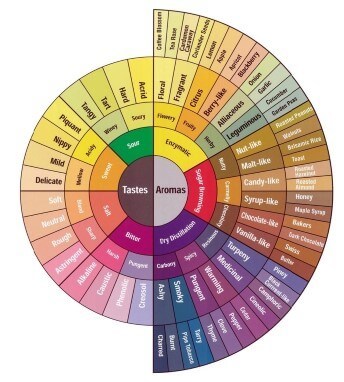
As you will remember in our previous post, we had discussed the birth and first two waves of the coffee movement. As you will also recall, the major evolutions that we consider monumental changes in the way we produce, distribute and consume coffee have all been relatively recent developments in history with the 1st wave of coffee not being documented until the late 18th century.
Our conversation left off with discussing the 2nd wave and the development or rebirth of the coffeehouse phenomenon. The idea was that coffee was less of a daily habit and more of a social ritual developed and designed to create a gathering space for individuals to connect and appreciate a product to its fullest. Coffee shops like Starbucks, Peet’s Coffee, and others tried to emulate the coffeehouses of old while highlighting and sharing the rich quality of experiences coffee could provide. The 2nd wave saw the promotion and favoring of espresso and milk based drinks to promote coffee’s diversity of flavor.
The Rise of Espresso and the Beanik
Although people like Howard Schultz popularized the selling and enjoyment of espresso based drinks and coined the phrase “3rd space” when talking about coffee shop culture, the idea of coffeehouses had been an integral part of subculture social networks since the early 1950’s.
The beatnik generation helped to open the door and lead the way for current coffee culture acceptance. The beatniks, a subculture of artistic creatives primarily in New York, were known for their affection for poetry, the arts, and staying up late contemplating life. Coffee shops mainly in the Greenwood Village and in some parts of San Francisco became cultural hubs for these types to go and drink strong, potent coffee from Europe late into the night and argue about politics and communicate with friends. These cultural centers helped create the standard of practice that most coffee shops now adhere to.
A Note of History and Opinion
Before we fully discuss the 3rd wave of coffee, it is important to note a major caveat here. The 3rd wave of coffee is relatively recent, only really being described as such in early 2002. Because this wave is so recent, a lot of the opinions formed are still fluid and up for conjecture among the different coffee communities. However, that being said, the 3rd wave has been the most influential in changing the way coffee is currently perceived and consumed.

3rd Wave and the Art of the Cult
The term 3rd wave was introduced to the coffee movement in a 2002 article written by Trish Skeie during her time roasting for Norwegian coffee company Mocca.
Her argument and the consensus among the coffee industry is that by the beginning of the 21st century, and as more consumers became more educated about coffee, the market demanded a higher quality product that satisfied both the intellectual and flavor curiosity it had created. In response, the coffee industry was looking at ways they could improve the coffee, the experience, and the flavors of the product.
This transition moved coffee away from manual and automatic machines, like the prolific Mr. Coffee automatic coffee brewer, to a more manual hands-on approach. This focus on quality and creating a heightened experience for coffee consumers made coffee become an artisanal and handcrafted product. Similar to high-end cocktails, high-end foods, and other handcrafted products, coffee became less about a beverage and more of a consumable work of art.
Aspiring to be taken as seriously as other culinary delicacies, coffee evolved drastically within only a few years. Coffee farmers took care in crafting and creating unique tasting coffees that represent individual communities rather than blends that created a consistent flavor. Café’s started to move away from automatic machines and focus on crafting individual cups of coffee by hand and using higher end products to blend with the coffees to create a full experience presentation with latte art, knowledgeable staff, and unique café layouts.

The Barista had instantaneously become less of a greeter behind the counter and more of an artisanal bartender handcrafting delicious coffee concoctions based on freshness, flavors, knowledge, and skill. The barista also now started to use science based practices and skill training to create amazing concoctions that previous waves had never approached.
For more information on the science of coffee, you can check out the seminal book The Professional Barista’s Handbook by Scott Rao.
Direct-Trade, Single-Origin, and Light Roasts
Another major development in the 3rd wave was the focus on the diversity of coffee flavors. Similar to craft beer, the 3rd wave of coffee focuses on trying to highlight diversity and complexity that can be found in a single product. Different regions, growing conditions, roasting styles, can help to extract a wide variety of flavors from the coffee beans.
Major coffee companies started to focus less on creating blends of coffee beans for a consistent flavor year-round, to highlighting seasonal differences in coffees from around the world. The 3rd wave introduced the concepts of single-origin coffees. These coffees are beans sourced all from the same area, and usually the same farm and marked as such to differentiate itself from other coffees in the same region. These single origin coffees are typically identified by their country, growing region and the elevation they are produced at.
As more and more roasters wanted to highlight the flavors naturally inherent in the coffee, many roasters started to adapt new roasting practices that created a lighter roast for the beans. Instead of the dark-oil filled coffee many consumers were used to, the coffees were now more of a light brown hue and produce lighter looking coffee beverages. This lighter body and mouth-feel are because lighter coffee roasts would highlight flavors of the coffee without “burning” the bean and creating the bitter, chalky taste coffee drinkers taste buds had become accustomed to. The flavors in the coffee range from simple like brown sugar or honey all the way to complex flavors like vinegar or tobacco leaves. Because of the diversity of growth regions, coffee has a tremendous amount of diversity of flavors.
The range of flavors present in coffee is so important to the 3rd wave that the SCAA, Specialty Coffee Association of America, has created a dynamic coffee flavor wheel to measure and identify the different flavors you can discern in coffee.

Sustainable Practices and Direct Trade over Fair Trade
As a direct result of more coffee companies wanting to highlight and create quality single-origin coffees, many companies started to move away from Fair Trade coffee practices in favor of Direct Trade. Although fair trade practices were developed to create a fair market that produced sustainable products, there was not a regulation or oversight on the coffee farms themselves. It was hard to discern and separate plantations producing higher quality coffee from substandard plantations. Also, as more coffee shops wanted a better quality product, they wanted to be able to control the development of the product to meet the demands of their market.
The Direct Trade model allowed for coffee companies to help coffee growing plantations create competitive and fair wages for their employees and get better production equipment to create a better product. This also helped to create a direct communication stream between the farmers and the producers of coffee to set fair wages and fair market prices that gave every part of the production line say in setting prices and equal treatment. The implementation of Direct Trade is considered by many to be the highlight of the 3rd wave movement.
The 4th Wave?
In 2016, in an article ran by the Denver Post, Smartco International declared that the coffee industry has officially entered the 4th wave of coffee. They define it as:
“A new focus on the whole coffee experience beginning at the farming operations through roasting and brewing. A barista’s job started becoming an art. There is also a focus on low- or non-pressurized brewing methods to allow for tasting more flavors.”
An interesting opinion, but not one that has been accepted by the rest of the coffee community. Many of the ideas or changes presented in the article are things that we still use to define innovations in the third wave.
But who knows, maybe it is too early to tell?
Regardless, coffee consumption has vastly changed since the early 15th century of goat herders with hyperactive livestock. As coffee continues to change and grow, so too will our perception of coffee. As innovations happen more rapidly and as we continue to grow, we could easily see the coffee community become disrupted and innovate again very soon.





